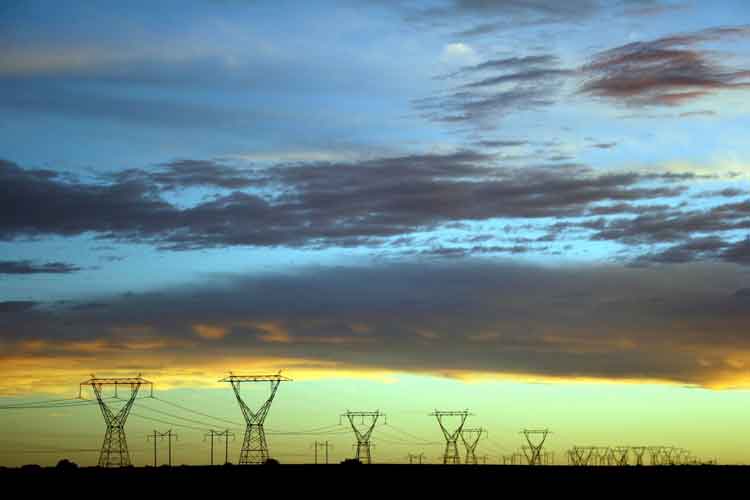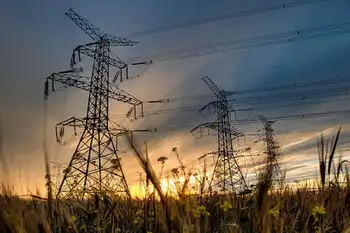Can Canada be carbon-free in 10 years?
What was Gore's "generational challenge" to America? Meet all of the nation's electricity needs through 100 per cent renewable, carbon-free energy sources within 10 years.
"We're borrowing money from China to buy oil from the Persian Gulf to burn it in ways that destroy the planet," Gore said. "Every bit of that's got to change."
Estimates by the Alliance for Climate Protection, a newly formed bipartisan group in the U.S., show that achieving Gore's goal of 100 per cent renewable electricity will cost between $1.5 trillion US and $3 trillion US — a huge investment. But Gore insists that his plan to revolutionize the American energy system is "achievable, affordable and transformative" and will revitalize the economy as well.
Can it be done in Canada?
Gore provides a long list of solutions to the hugely complicated problem of reinventing an existing electrical grid. These include essential elements such as a carbon tax, energy efficiency and conservation, as well as investment in more renewable energy capacity using existing technology.
CBCNews.ca asked three environmental experts whether Canadians have the appetite and the means for the "bold policy solutions" Gore is asking Americans to embrace. The experts are: Jean Langlois, the director of national campaigns at the Sierra Club of Canada; Professor Christopher Green, an environmental economist at McGill University; and Tim Weis of the Pembina Institute in Edmonton.
This is their assessment:
Issue one: "Tax what we burn, not what we earn." Gore says the first priority is moving forward with a revenue-neutral tax shift that would allow for a sharp reduction in payroll taxes with the difference made up in carbon taxes.
B.C.'s Liberal government recently introduced a revenue-neutral carbon tax that begins at $10 per tonne of greenhouse gases generated and will increase over time. It is widely seen as a trial run.
The federal Liberal party is proposing a similar, national carbon-tax as part of its newly launched "Green Shift," but the Conservative government of Stephen Harper has ridiculed the idea, and there are concerns Stéphane Dion's plan may not be totally revenue neutral: the Liberal's carbon tax is designed to produce $15 billion in income (and other) tax breaks, but it is also designed to help finance a multi-billion-dollar plan to tackle poverty.
The Sierra Club's Jean Langlois says that a carbon tax is long overdue: "Carbon tax alone won't solve climate change, but we can't solve climate change without carbon pricing."
Professor Christopher Green, from McGill University, agrees that some form of carbon pricing is necessary in Canada, and he firmly supports a tax-based system. But he also cautions that plans with tax penalties that start small, for political reasons, and then escalate rapidly will be difficult for industry to adjust to.
Issue two: National electricity grid. Gore calls for a grid that is sufficiently advanced to link the "areas where the sun shines and the wind blows to the cities in the east and west that need the electricity." Can Canada, with a much smaller population and more forbidding geography, make such a system work?
The experts agree that a fully integrated national electricity grid isn't a wise investment in Canada.
There's no question there is substantial renewable energy capacity in remote areas. But, says Green, because the expanses between large cities in Canada are so great and the existing links are weak, many of the provinces rich in carbon-free energy would benefit more by extending their grids south to sell power to America rather than going to the great effort of building an east-west system.
Tim Weis of Pembina agrees, "Alberta and Saskatchewan, for example, have some of the best wind and solar resources and could benefit from better interconnections with B.C. and Manitoba, respectively." But apart from that, he says, there are more effective ways to invest (such as energy efficiencies), and a fully integrated grid should be low on the list of national priorities.
About 95 per cent of Canada's "clean" hydroelectric power is located in five provinces — Newfoundland, Quebec, Ontario, Manitoba and B.C. — almost all of which face geographic hurdles.
Since the mid-1980s, Manitoba and Ontario have been studying the possibility of developing an east-west power grid to bring surplus hydroelectric power from Manitoba to Ontario. The most recent cost estimate (2004) was $5.5 billion.
Issue three: Solar and wind energy. Gore says that America can start a massive expansion of solar, wind and geothermal energy right now. Can Canada make this type of energy work for us within 10 years?
According to Environment Canada, approximately 17 per cent of Canada's power generation comes from coal- and oil-fired plants. That is a huge proportion, all of which would have to be replaced by renewable energy such as wind and solar power if Canada were to take up the Gore challenge.
All three experts agree that a serious increase in wind and solar energy production would require both major policy changes by federal and provincial governments as well as substantial financial investment.
In 2007, according to the Canadian Wind Energy Association, Canada had only developed 1,873 megawatts of wind energy, enough to power 560,000 homes. At the same time, Natural Resources Canada estimates that there are almost 30,000 megawatts of developable wind resources in this country, which amounts to almost 28 per cent of Canada's total energy capacity (108,533 MW in 2003).
With wind turbines currently costing upward of $1,500 a kilowatt to install, according to some estimates, 30,000 MW would amount to an investment of roughly $45 billion.
Weis of the Pembina Institute thinks that governments should guarantee priority grid access for renewable energy sources and provide long-term payment for renewable sources that would make them profitable to install and operate.
Ontario did just that, beginning in 2006, by allowing small renewable energy generators to sell into the grid through a streamlined process and at a premium price. But the program proved so successful that it was recently put on hold because the uptake that was expected over 10 years was realized in just one.
According to Langlois, the federal government has to do more to encourage this development, and all public money that is used to support oilsands development should be shifted toward more green energy sources, like wind and solar.
But Green says that policy problems are only part of what's slowing down Canada's introduction of more solar and wind power. He says technological and infrastructure constraints make Gore's goal, at least as it applies to solar and wind, nearly impossible: "Without transmission, and without storage, a utility cannot put more than a few new percentage points into the system."
Issue four: Nuclear. Gore allows that nuclear power production will hold steady, comprising roughly 20 per cent of America's energy. How far down the nuclear road should Canada go?
Nuclear energy has been a significant energy supplier in Canada since the 1960s, when the first Candu reactor started powering Canadian homes. Nuclear energy now makes up roughly 15.6 per cent of Canada's energy mix, with new nuclear development planned in Ontario and, possibly, Alberta, where a new reactor has been proposed in Peace River.
Both the Sierra Club and the Pembina Institute say that Canada should be working to phase out nuclear production, not increasing it. "Nuclear power is not renewable power; it's mined out of the earth, and it's toxic," Langlois says.
Green argues that despite the costs, nuclear energy is a vital part of Canada's electricity system and plays a major role in meeting the base load energy needs in heavily populated regions like Ontario.
To reach 20 per cent would mean another six 700 MW Candu-sized reactors — and that would just meet existing needs. The last nuclear reactors to be built in this country were at Ontario's Darlington A power plant — at a cost of $14 billion by the time they were completed in 1993.
Final words: Gore's speech asked Americans to accept a challenge that would completely alter their way of life. He says that without action, "the survival of the United States of America as we know it is at risk."
Langlois: "It's certainly technically and technologically doable, and this is the sad thing: it may not be politically doable."
Green: "I just want to see an understanding that Gore was right about the first inconvenient truth [global warming], but we have to recognize the second inconvenient truth, which is that we don't have the means to do it right now."
Weis: "We aren't there yet, but given the vast potential for renewable, efficiency and storage technologies in Canada, I'm holding out hope we will get on board. If we don't, we'll be importing [technology from] the Americans, who clearly will be forging ahead rapidly whoever succeeds President Bush."
Related News

U.S. Launches $250 Million Program To Strengthen Energy Security For Rural Communities
WASHINGTON - The U.S. Department of Energy (DOE) today issued a Request for Information (RFI) seeking public input on a new $250 million program to strengthen the cybersecurity posture of rural, municipal, and small investor-owned electric utilities.
Funded by President Biden’s Bipartisan Infrastructure Law, the Rural and Municipal Utility Advanced Cybersecurity Grant and Technical Assistance (RMUC) Program will help eligible utilities harden energy systems, processes, and assets; improve incident response capabilities; and increase cybersecurity skills in the utility workforce. Providing secure, reliable power to all Americans will be a key focus on the pathway to achieving President Biden’s goal of a…





